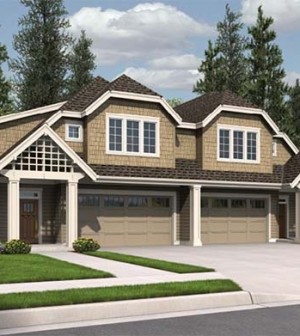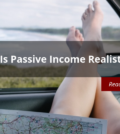- 4 Unexpected Things I’ve Learned From Buying My First Mobile Home Park
- How Ironic: America’s Rent-Controlled Cities Are Its Least Affordable
- U.S. homes are still a bargain on the international market
- Getting The Best Possible Quality Photos On MLSs and Syndicated Sites
- Home buyers in these markets have the upper hand
5 Tips for Moving from SFH to Multi-Family

I was recently at a real estate investors club meeting (REIA) where the proverbial debate- single-family versus multifamily investing-once again-underway.
Investors have strong opinions about this topic. It sometimes gets downright brutal. It is a debate I heard many times early in my investing career and I was also perplexed because both arguments made so much sense.
Over the years, I came to realize there is no right or wrong answer. It is nothing more than the type of investment that suits your objectives. I think the debate is best summed up by the type of investor you are.
Cash flow or equity growth investor? Hands-on or hands-off?
Once I discovered the thought process behind the debate of whether to buy single-family or multifamily, I found the common denominator. The person who felt strongly about the multifamily investments was most interested in cash flow and economies of scale. The person interested in single-family was most interested in ease of management and equity growth.
My personal experience has been that having a mix of these properties works very well to give you a well-rounded and balanced investment.
My first few investments were duplexes, triplexes and fourplexes. I was able to acquire these with simple residential financing. After about 10 years of multifamily investing, I diversified into single-family investments. I can speak from a position of strength when I say there is no right or wrong investment. I continue to be invested in both. They each have their benefits and they each have their challenges. Here are the top 5 attributes I have found with each of these investment types:
5 benefits and drawbacks to multifamily investing
No. 1 – Economy of scale
Multifamily definitely delivers in the category of economy of scale. Everything from having multiple tenants helping to pay for the single mortgage, to volume pricing for property management to volume pricing for repairs and purchases of appliances, etc.
No. 2 – Higher cash flow
The above economies of scale afford you better cash flow.
No. 3 – Finance opportunities
When you purchase properties of 5 units and larger you have a commercial loan. These loans typically are less interested in your personal finances and more interested in financing on the merits of the property and the financial income from it. They will however be interested in your experience with such an investment. This is one reason I started with two- and four-unit investments. These two- and four-unit properties that can be acquired with residential financing will be a good reference for moving to the larger commercial loans for the properties with 5 units or more. These two-and four-unit purchase loans will also put more weight on the income of the rental units but will rely on your personal credit score to secure the loan. The lender will typically use 75% of the income toward the repayment of the loan. A property manager managing the property will also lend credibility toward loan consideration if you do not have previous multifamily experience.
No. 4 – More transient tenants
Be prepared to see tenants move in and out more often. A tenant does not consider his or her multifamily apartment as a home. It is an apartment that is shared with other people. Tenants of apartments statistically move more often, typically every year or two.
No. 5 – More landlord expenses
With an apartment with shared tenants, the landlord will be responsible for more items such as lawn care and common area maintenance. Often the electric and water will also be on one meter and therefore the landlord will pay for this. When buying a multifamily property I can tell you first-hand you want to avoid properties with one common meter. When tenants do not pay their own expenses they will use and abuse this included utility. When buying these units, I suggest negotiating, or budgeting within the sale, the separation of these meters. By the way, I have found making this one change can be a great value play for you, increasing your cash flow and increasing the property value.
5 benefits and drawbacks to single-family investing
No. 1 – More controlled expenses
Single-family rental expenses typically include the mortgage (unless you pay cash), the insurance for the property and the taxes. Tenants pay all other expenses. As the landlord, your expenses are fixed so you have a better handle as to what your true rate of return is. I would always have the smaller ticket repairs assigned to the tenants as well. For example, make the first $200 to $300 worth of repairs the tenant’s responsibility and write it into the lease right up front. I have never had a problem with this.
No. 2 – Fewer tenant turnovers
Tenants of single-family homes tend to be happier with their private quarters. They do not have fellow tenants to deal with and they call this place their home. I would often lease my single- family properties on a lease/option. This is more of a psychological benefit to the tenant. They want to know they may be able to buy the property and stay in it. Rarely does a lease/option tenant actually execute the purchase, but they love knowing they can, and they take better care of it as a tenant. Additionally we would often get two- and three-year leases this way.
No. 3 – Better exit strategies
A single-family home is your most liquid real estate class. You can sell to anyone from first-time homebuyers, to the move-up buyer, to the empty nester. When bought correctly, you can attract a full-price retail buyer. When you sell to a retail buyer, you will get more benefit from your equity buildup than when you sell to another investor who of course wants to buy for the financial merit of the property.
No. 4 — One tenant’s income
When this unit is vacant you have no other money coming in until it is re-occupied and you suffer from negative cash flow.
No. 5 — Cost per rental unit
Rental purchases are often looked at on a per-door price basis. A two-unit that sells for $100,000 means it costs $50,000 per door. The single-family unit that sells for $100,000 means the cost was $100,000 per door. No economies of scale here.






 100% Secure
100% Secure
You must be logged in to post a comment Login